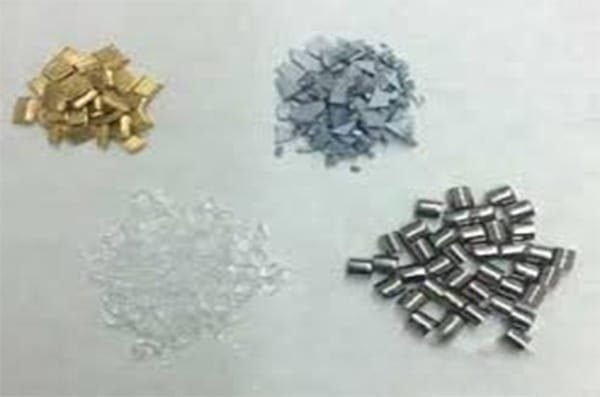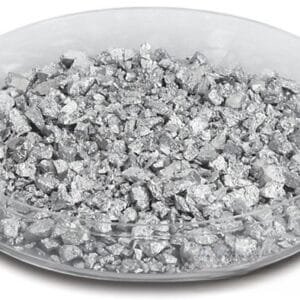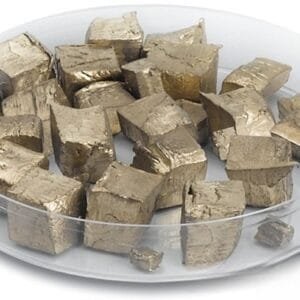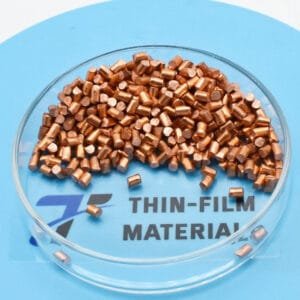High-Purity Nickel Chromium Evaporation Materials
TFM provides high-purity nickel-chromium evaporation materials, an alloy consisting of nickel (Ni) and chromium (Cr). These materials are essential in deposition processes, contributing to the production of high-quality deposited films. We ensure that our nickel-chromium materials achieve a purity level of up to 99.9995%, supported by rigorous quality assurance measures to guarantee their reliability.
Nickel-Chromium Evaporation Materials Specifications
| Compound Formula | CrNi |
| Appearance | Silver-gray |
| Melting Point | 1395 °C |
| Theoretical Density | 8.5 g/cc |
| Solubility in H2O | Insoluble |
| Shape | Powder/ Pellets/ Granule/ Custom-made |
Applications of Nickel-Chromium Evaporation Materials
Nickel-chromium evaporation materials are utilized in a variety of applications:
- Deposition Processes: Essential for semiconductor deposition, chemical vapor deposition (CVD), and physical vapor deposition (PVD).
- Optics: Used for wear protection, decorative coatings, and display technologies.
Product Packaging and Handling
We ensure our nickel-chromium evaporation materials are meticulously packaged to prevent damage during storage and transportation, maintaining their quality in pristine condition.
Contact Us
As a premier manufacturer and supplier, TFM offers nickel-chromium evaporation materials in both powder and granule forms, with customized options available upon request. For up-to-date pricing and inquiries about our evaporation materials or other deposition products not listed, please contact us.
Ordering Table
New wpDataTable
| Material | Size | Quantity | Purity | Part Number |
| Nickel/Chromium | 1/4" Dia. x 1/4" Length | 100 g | 99.95% | EVMNICRQXQ-D |
| Nickel/Chromium | 1/4" Dia. x 1/4" Length | 500 g | 99.95% | EVMNICRQXQ-T |
| Nickel/Chromium | 1/8" Dia. x 1/8" Length | 400 g | 99.95% | EVMNICR35EXE-P |
| Nickel/Chromium | 1/8" Dia. x 1/8" Length | 25 g | 99.95% | EVMNICREXE-A |
| Nickel/Chromium | 1/8" Dia. x 1/8" Length | 50 g | 99.95% | EVMNICREXE-B |
| Nickel/Chromium | 1/8" Dia. x 1/8" Length | 100 g | 99.95% | EVMNICREXE-D |
| Nickel/Chromium | 1/8" Dia. x 1/8" Length | 300 g | 99.95% | EVMNICREXE-L |


 MSDS File
MSDS File



Reviews
There are no reviews yet.